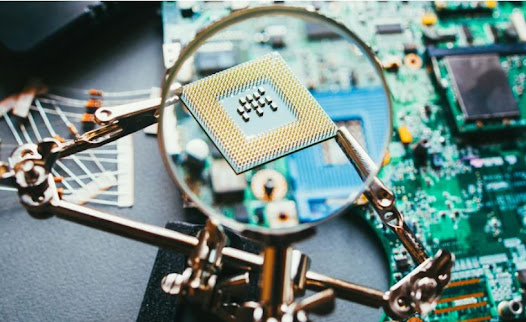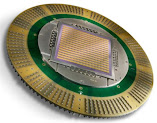Printed Circuit Board (PCB) design has undergone significant transformations over the years, evolving from simple, manually assembled circuits to highly complex, automated, and sophisticated systems. Among the innovative strides in
PCB design, embedded component technology stands out as a game-changer. Embedded component PCB design, where components are integrated within the PCB itself, is rapidly becoming a cornerstone in electronics design, offering numerous advantages over traditional methods. This piece delves into the myriad benefits of embedded component PCB design, exploring how it's reshaping the landscape of electronic
manufacturing and design.
What is Embedded Component PCB Design?
Embedded component PCB design refers to a methodology where electronic components are embedded within the layers of the PCB, rather than being mounted on the surface. This integration process involves placing components such as resistors, capacitors, and even microchips within the PCB substrate, which can lead to a multitude of benefits compared to conventional surface-mounted or through-hole components. By understanding the intricacies of this design philosophy, one can appreciate the substantial advantages it brings to PCB design and manufacturing.
Space and Size Reduction
One of the most significant advantages of embedded component PCB design is the considerable savings in space and size. By embedding components within the PCB, designers can drastically reduce the board's overall footprint. This is particularly beneficial in industries where space is at a premium, such as in mobile devices, wearable technology, and aerospace applications.
Miniaturization of Electronics: The drive towards smaller, more compact electronic devices has never been more intense. Embedded component PCBs play a crucial role in this trend, allowing for the creation of slim, efficient devices without compromising on functionality. The ability to embed components means that the extra space required for traditional surface-mounted or through-hole components can be eliminated, leading to slimmer designs and more efficient use of space.
Case Studies: Consider the evolution of smartphones and smartwatches. These devices have become increasingly compact over the years while incorporating more features and capabilities. Embedded component PCB design has been instrumental in this evolution, enabling manufacturers to fit more components into constrained spaces, thereby enhancing the device's functionality without increasing its size.
Improved Electrical Performance
Embedded component PCB design not only optimizes space but also enhances the electrical performance of the board. This is particularly vital for high-speed and high-frequency applications where signal integrity is paramount.
Enhanced Signal Integrity: By embedding components directly into the PCB, the path that electrical signals must travel is significantly shortened. This reduction in trace length minimizes signal delays, reduces electromagnetic interference (EMI), and enhances the overall signal integrity, which is crucial for high-speed circuits.
Case Studies in High-Frequency Circuits: High-frequency applications, such as those in telecommunications and radar systems, benefit immensely from the reduced parasitic capacitance and inductance that embedded component PCBs offer. These improvements lead to faster signal transmission and reduced noise, which are critical for the performance and reliability of these systems.
Thermal Management
Effective thermal management is another critical advantage offered by embedded component PCB design. By integrating components within the PCB, heat distribution becomes more uniform, aiding in effective heat dissipation.
Improved Heat Dissipation: Embedded components can improve thermal conductivity and heat distribution across the PCB. This uniform heat distribution helps in maintaining optimal operating temperatures, thereby reducing the likelihood of overheating and enhancing the overall reliability of the device.
Reliability and Longevity: Devices with embedded component PCBs often exhibit enhanced reliability and longer operational lifetimes. The improved thermal management reduces the thermal stress on components, minimizing the risk of failure due to overheating.
Reliability and Durability
The structural benefits of embedded component PCB design contribute significantly to the board's reliability and durability.
Reduced Mechanical Stress: Traditional surface-mounted components can be prone to detachment or failure due to mechanical stress or vibrations. Embedded components are inherently more secure, being encased within the PCB layers, which offers better resistance to mechanical stresses and enhances the durability of the product.
Lower Risk of Component Detachment: In environments with high vibrations or frequent mechanical shocks, embedded components offer a distinct advantage by significantly reducing the risk of component detachment or circuit breakage.
Cost and Manufacturing Efficiency
While the initial setup and design for embedded component PCBs can be complex and costly, the long-term benefits in terms of manufacturing efficiency and cost reduction are significant.
Streamlined Manufacturing Process: Embedding components within the PCB can simplify the assembly process, reducing the number of manufacturing steps and potentially lowering production costs in high-volume productions.
Material and Cost Savings: By reducing the PCB size and eliminating the need for additional materials and components for surface mounting, embedded component design can lead to significant material savings and, consequently, cost reductions in the long run.
Challenges and Considerations
Despite the numerous advantages, embedded component PCB design comes with its own set of challenges and considerations. The complexity of the design process, difficulties in inspection and testing, and concerns regarding repair and rework need to be meticulously addressed. Designers must weigh these challenges against the benefits to determine the most suitable approach for their specific application.
Future Outlook and Conclusion
The trajectory of embedded component PCB design points toward a future where electronics are increasingly compact, efficient, and reliable. As technologies advance and the demand for miniaturized, high-performing devices continues to grow, the role of embedded component PCB design is set to become even more pivotal. By embracing these innovations, designers and manufacturers can push the boundaries of what's possible in electronics, heralding a new era of compact, efficient, and high-performing devices.
Case Study: Aerospace Applications
In the aerospace industry, where every cubic centimeter matters, embedded component PCB design has been a game-changer. Consider a satellite where the space for electronics is extremely limited, and the weight is a critical factor. By using embedded component PCBs, aerospace engineers have been able to reduce the weight and size of the satellite's electronic systems significantly. This reduction directly translates to lower launch costs and the potential for more complex or additional functionalities within the same space constraints.
Impact: Embedding components reduced the PCB size by up to 30% in some aerospace applications, leading to lighter and more compact satellites.
Improved Electrical Performance - Deeper Dive
Case Study: High-Speed Computing
In the realm of high-speed computing, such as in servers and high-performance computers, signal integrity is paramount. A study focusing on embedded component PCBs in these systems showed a marked improvement in signal speed and a reduction in latency, crucial for maintaining high data rates and ensuring efficient processing.
Results: The transition to embedded component PCBs in server motherboards resulted in a 15% improvement in signal speed and a 20% reduction in latency, significantly enhancing overall system performance.
Thermal Management - Deeper Dive
Case Study: Electric Vehicles (EVs)
Electric vehicles (EVs) require efficient thermal management systems due to the heat generated by their power electronics. An automotive company integrated embedded component PCBs in the control units of their EVs, resulting in better heat distribution and a more reliable thermal management system.
Outcome: The use of embedded component PCBs led to a 10% reduction in the operating temperature of the control units, extending their lifespan and improving the vehicle's overall efficiency.
Reliability and Durability - Deeper Dive
Case Study: Consumer Electronics
In consumer electronics, like smartphones, reliability is key to customer satisfaction. A smartphone manufacturer implemented embedded component PCBs, which led to fewer instances of component failure due to mechanical stress, as the components were no longer surface-mounted but embedded within the PCB.
Improvement: This change resulted in a 25% decrease in warranty claims related to hardware failures within the first year of use.
Cost and Manufacturing Efficiency - Deeper Dive
Case Study: Mass-Produced Wearable Devices
A company producing wearable devices switched to embedded component PCBs to take advantage of the cost savings at scale. The initial investment was high, but the streamlined manufacturing process and reduced material costs led to significant savings as production volumes increased.
Economic Analysis: Despite a 20% increase in initial production costs, the overall manufacturing cost per unit decreased by 15% when the production scaled up, illustrating the cost-efficiency of embedded component PCBs in large-scale manufacturing.
Conclusion
These case studies and analyses underscore the transformative potential of embedded component PCB design across various industries. By reducing size and weight, enhancing electrical performance, improving thermal management, increasing reliability, and optimizing manufacturing efficiency, embedded component PCBs represent a significant leap forward in electronic design and manufacturing. As this technology continues to evolve and mature, its adoption is expected to grow, further driving innovation and efficiency in the electronics industry.














